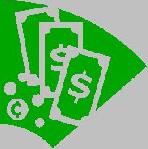
 |
|
| Financial Terms | |
| Economies of scope |
|
Information about financial, finance, business, accounting, payroll, inventory, investment, money, inventory control, stock trading, financial advisor, tax advisor, credit.
Main Page: business, financial, financial advisor, stock trading, accounting, money, inventory control, investment, |
Definition of Economies of scope
Economies of scopescope economies exist whenever the same investment can support multiple profitable
Related Terms:Economies of scaleThe decrease in the marginal cost of production as a plant's scale of operations increases. ScaleA bank that offers to pay different rates of interest on CDs of varying rates is said to "post a scale." Scale enhancingDescribes a project that is in the same risk class as the whole firm. Scale inWhen a trader or investor gradually takes a position in a security or market over time. Logarithmic ScaleA scale in which equal proportions are shown as equal distances so that, for example, a doubling from 2 to 4 is represented by one inch, as is a doubling from 4 to 8. Ratio ScaleSee logarithmic scale. Decile rankPerformance over time, rated on a scale of 1-10.1 indicates that a mutual fund's return was in the  Management feeAn investment advisory fee charged by the financial advisor to a fund based on the fund's VolatilityA measure of risk based on the standard deviation of investment fund performance over 3 years. discounted cash flow (DCF)Refers to a capital investment analysis technique Correlation coefficientA statistic in which the covariance is scaled to a DepressionA prolonged period of very low economic activity with large-scale unemployment. Escalating Price OptionA nonqualified stock option that uses a sliding scale for tiered interest rateA pre-set scale of interest which is based on the premise that higher sums of money earn higher rates of interest. Premium OffsetAfter premiums have been paid for a number of years, further annual premiums may be paid by the current dividends and the surrender of some of the paid-up additions which have built up in the policy. In effect, the policy can begin to pay for itself. Whether a policy becomes eligible for premium offset, the date on which it becomes eligible and whether it remains eligible once premium offset begins, will all depend on how the dividend scale changes over the years. Since dividends are not guaranteed, premium offset cannot be guaranteed either. Related to : financial, finance, business, accounting, payroll, inventory, investment, money, inventory control, stock trading, financial advisor, tax advisor, credit. |